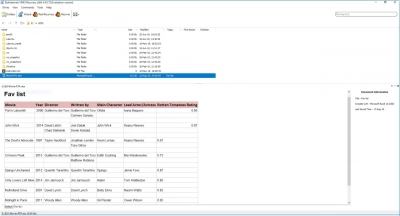Restore a VMDK data
This article is fully dedicated to VMDK restoration. Here you will find out:
- how to provide VMDK file recovery
- how to recover missing VMDK flat file
- how to recover VMDK file from backup
When you need to restore a VMDK file to physical drive?
Naturally, you must be aware of the primary indications of damage if you want to be certain that a VMDK file needs to be recovered. The most typical signs of damage to VMDK files are shown below.
- 1. The host fails and the VM does not start up later.
- 2. After the host has been forced to shut down, the VM does not start.
- 3. The virtual machine returns an error:
“Cannot open the disk '[path to virtual machine]/[path.vmdk]/[virtual disk.vmdk]' or one of the snapshot disks it depends on. Reason: The specified virtual disk needs repair.”
- 4. If you are trying to mount a virtual disk, you may receive an error message such as: “There was a problem while trying to mount a virtual disk.”
So, how do you restore a VMDK file?
Read on! This article dedicated to this particular issue and you will understand how to deal with such a problem.
Case 1: how to restore a VMDK file (descriptor)
You can restore the VMDK descriptor file yourself with the help of the addition of a new disk to a virtual machine. Here is the simple guide for doing so:
- 1. Create a new VM in a vSphere environment.
- 2. Add a new disk to the newly created virtual machine.
- 3. Be sure to specify use of the existing -flat.vmdk. After a while, the VMDK descriptor file will be re-created automatically. Manual editing is not necessary.
As for the recovery of the -flat.vmdk file, this method will not work.
Read on to learn what will.
Case 2: how to extract a -flat.VMDK file
In order to restore flat.vmdk files, you need to find the best professional software. Fortunately, there is no need frantically search the Internet for such software. DiskInternals VMFS Recovery™ is what you need.
Tip: Learn more about VMDK file format here!
You can restore both the .vmdk file and the -flat.vmdk file with this tool. DiskInternals VMFS Recovery™ is built for all users’ needs, so there is no reason to doubt.
Take the first step towards seamless VHD data recovery:
- DiskInternals VMFS Recovery™ works with virtual machines, including VMware, VirtualBox and Virtual PC disk image files.
- The software supports vSphere 6 and ESX/ESXi Server.
- It works with Windows 7 and newer versions. But to create a VMFS structure you will need RAM 6+Gb free space. The best option is to use Windows 10.
- A free trial version of DiskInternals VMFS Recovery™ is available. You can see for yourself how well the software works before purchasing a license. After purchasing the license, re-installation or re-scanning is not required.
- DiskInternals VMFS Recovery™ supports multi-level folders and Unicode file names.
- You can mount virtual disks as local disks and you can view them in Windows Explorer.
How do you recover a VMDK file? Use this guide for VMDK restoration when using DiskInternals VMFS Recovery™.
Step 1. Download and install the software. In order for restore VMDK files, open the VMFS disk. To do it, select one of the following methods:
- Connect the VMFS disk to another Windows computer.
- Boot Windows with ESX/ESXi from an external drive.
- Create a network connection using iSCSI, SSH or Fibre Channel.
- Access data storage from a Windows virtual machine running VMFS Recovery™ in the same ESX/ESXi.
Step 2. Scan the VMFS disk. Wait for the process to be completed. A new window will display the search results.
Step 3. Locate the correct VMDK file and mount this file with the .vmdk extension as a disk image.
Step 4. Open the mounted VMDK and select recovery mode: Reader, Uneraser or Recovery. For VMDK restoration you can use every of these three modes.
Step 5. Preview. Select the desired file, right-click on it and select “Preview in New Window”.

Step 6. Saving. Purchase a license for VMFS Recovery™ and enter the license key in the appropriate window. The save wizard will help you to complete VMDK restoration.
Case 3. How to restore a VMDK file from backup
If you have a backup, then you can also start VMDK restoration. After you have selected all the necessary VMDK files in the backup, you can select one of the options in “Recovery options for all selected items”:
1. For faster recovery, you can select a proxy, provided that you use it in the host where the target virtual machine exists. Open the list of proxy clients. Find and select a proxy. Now click the Browse button, then select "Specify the path to the folder." Select the folder where the VMDK files will be restored. Click OK.
2. You can also convert the virtual machine disk. To do this, go to the section "Convert virtual disk" and click on "Convert disk to". Here you will be offered two options:
- VHDX, a dynamic virtual disk format.
- VHD, an outdated virtual disk format.
Select the preferred disk format. Virtual machine disk conversion is completed. A new converted disk can be attached to an existing virtual machine. Learn more about backup and data recovery!
